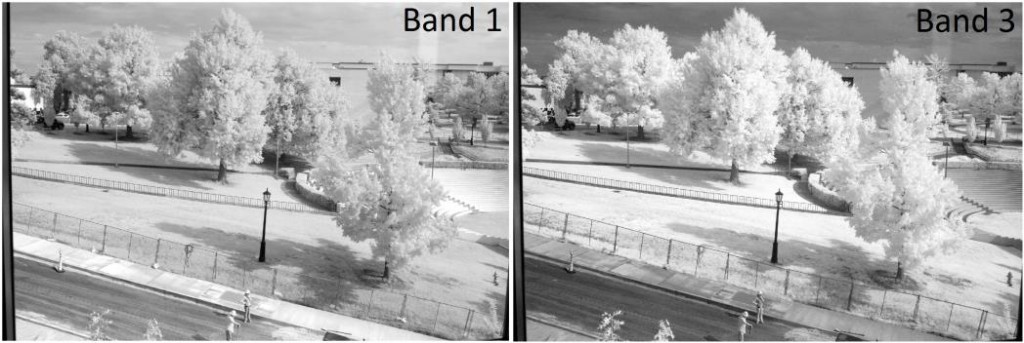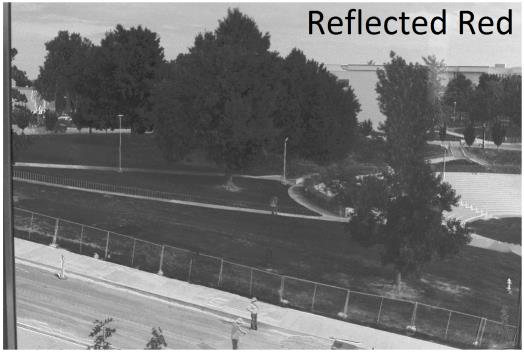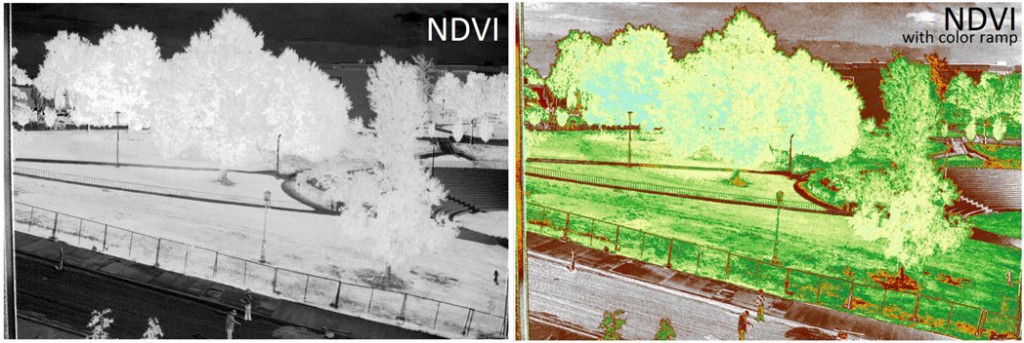Because of the light transmission properties of the filter installed in the CAST Nikon D200 IR DSLR camera, it is possible to isolate infrared and red light into separate channels. These channels can then be used to generate an NDVI image using the well known formula:
NDVI = (NIR – Red) / (NIR + Red)
We’re calling this pseudo-NDVI for a couple reasons; 1) the IR filter installed only captures a portion of the visible red (probably less than half), so this bit of information is relatively weak, and 2) our method of isolating the “reflected red” (Band1 – Band3) is overly simplistic. However, we have tried more complicated methods (e.g. principal components, also averaging bands 2 and 3) but results did not improve. Without more work, the results of this process should not be compared to calibrated NDVI images.
1. Load (individually) bands 1 and 3. Band 1 represents Red+IR, Band 3 is IR only.
2. Run the Raster Calculator tool to produce a “reflected red” raster using the following raster math:
Band1 – Band3
3. Run the Raster Calculator tool to produce NDVI raster using:
(Float(“Band3”) – Float(“ReflectedRed”)) / (Float(“Band3”) + Float(“Reflected Red”))
Note: If you don’t use the Float functions in step 3 you end up with integers (-1,0,1), which are useless.



